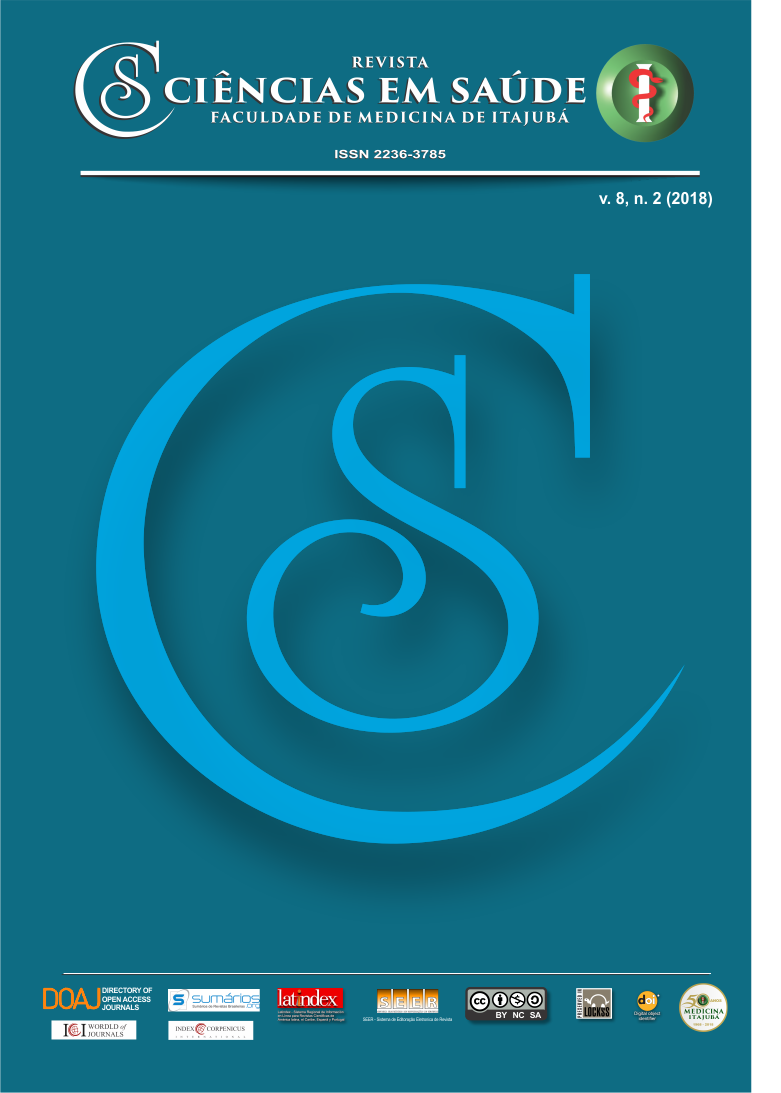Relação dos níveis de glicemia e proteína C-reativa com o prognóstico de pacientes com infarto agudo do miocárdio com supradesnível do segmento ST / Relation of blood glucose and C-reactive protein levels to the prognosis of patients with acute myocardial infarction with ST segment elevation
Main Article Content
Abstract
Introdução: Pacientes com Infarto Agudo do Miocárdio (IAM) apresentam intensa resposta sistêmica ao insulto isquêmico, podendo evoluir com complicações que podem estar associadas ao valor de glicemia e proteína C-reativa da admissão. Objetivos: Avaliar a relação dos níveis glicêmicos e de proteína C-reativa com o prognóstico de pacientes internados com IAM com supradesnível do segmento ST. Métodos: Estudo retrospectivo e transversal, com análise de prontuários de pacientes que foram internados com diagnóstico de IAM com supradesnível do segmento ST no período de 1º março de 2016 a 28 de fevereiro de 2017 no Hospital Escola de Itajubá (MG, Brasil). Foram incluídos na análise 71 prontuários de pacientes de ambos os sexos e com faixa etária entre 43 a 88 anos de idade. Utilizou-se o Excel, IBM® SPSS 21.0, teste Qui-Quadrado ou teste Exato de Fisher para análise. Resultados: Na admissão, a hiperglicemia (glicemia superior a 180 mg/dL) estava presente em 75% dos pacientes que faleceram (p=0,034). Observou-se que todos os pacientes que evoluíram para óbito tinham proteína C-reativa aumentada. Conclusão: A hiperglicemia da admissão correlaciona com pior prognóstico de pacientes com IAM com supradesnível do segmento ST. A proteína C-reativa apresenta uma associação com o pior prognostico, mas sem relação estatística significante devido ao tamanho da amostra.
Palavras-Chave: Hiperglicemia; Proteína C; Prognóstico; Infarto do miocárdio com supradesnível do segmento ST
ABSTRACT
Introduction: Patients with Acute Myocardial Infarction (AMI) present an intense systemic response to ischemic injury and may develop complications that may be associated with the values of glycemia and C-reactive protein when they were admitted to hospital. Aims: To evaluate the relationship of glycemic and C-reactive protein levels with the prognosis of hospitalized patients with ST-elevation myocardial infarction. Methods: Retrospective and cross-sectional study with medical records of hospitalized patients with a diagnosis of AMI with ST segment elevation in the period from March 1, 2016 to February 28, 2017, at Hospital Escola de Itajubá (Brazil). The analysis included 71 patients of both genders and ages between 43 and 88 years old. It was used Excel, IBM® SPSS 21.0, Chi-Square test or Fisher's Exact test for the analysis. Results: At admission, hyperglycemia (glycemia greater than 180 mg/dL) was present in 75% of patients who died (p=0,034). It was observed that all patients who evolved to death in study had an increased C-reactive protein levels. Conclusion: Admission hyperglycemia is correlated with worse prognosis in patients with AMI with ST segment elevation. C-reactive protein had an association with the worst prognosis, but there was no statistically significant relationship due to the sample size.
Keywords: Hyperglycemia; C-reactive protein; Prognosis; AMI with ST segment elevation
Article Details
Authors maintain copyright and grant the HSJ the right to first publication. From 2024, the publications wiil be licensed under Attribution 4.0 International 
 , allowing their sharing, recognizing the authorship and initial publication in this journal.
, allowing their sharing, recognizing the authorship and initial publication in this journal.
Authors are authorized to assume additional contracts separately for the non-exclusive distribution of the version of the work published in this journal (e.g., publishing in an institutional repository or as a book chapter), with acknowledgment of authorship and initial publication in this journal.
Authors are encouraged to publish and distribute their work online (e.g., in institutional repositories or on their personal page) at any point after the editorial process.
Also, the AUTHOR is informed and consents that the HSJ can incorporate his article into existing or future scientific databases and indexers, under the conditions defined by the latter at all times, which will involve, at least, the possibility that the holders of these databases can perform the following actions on the article.

